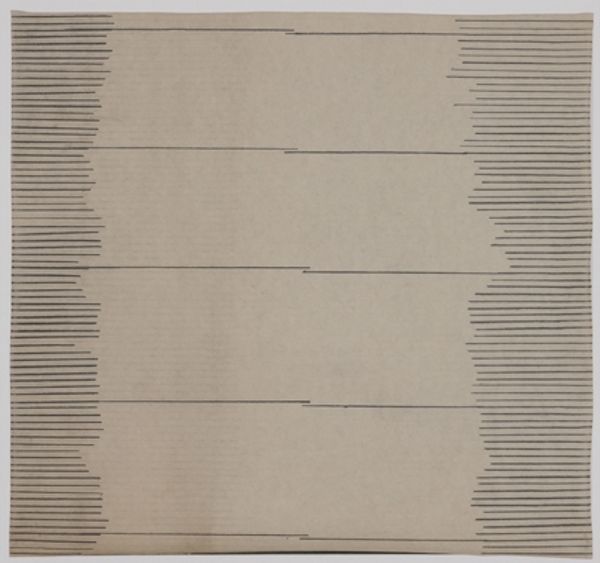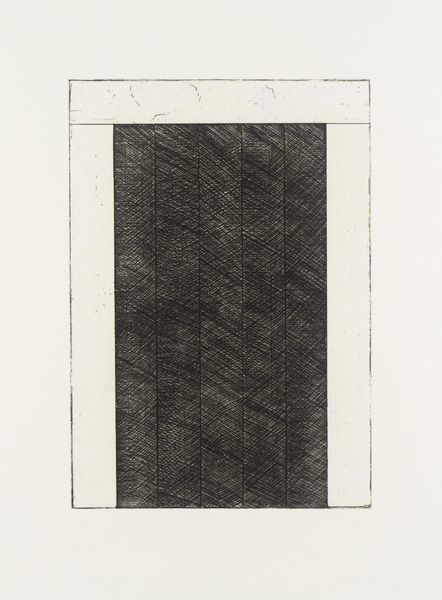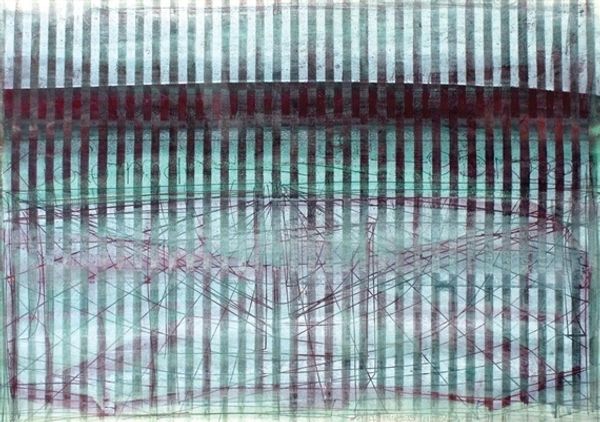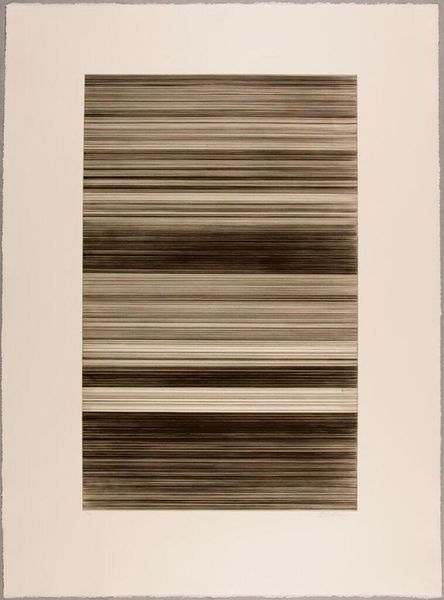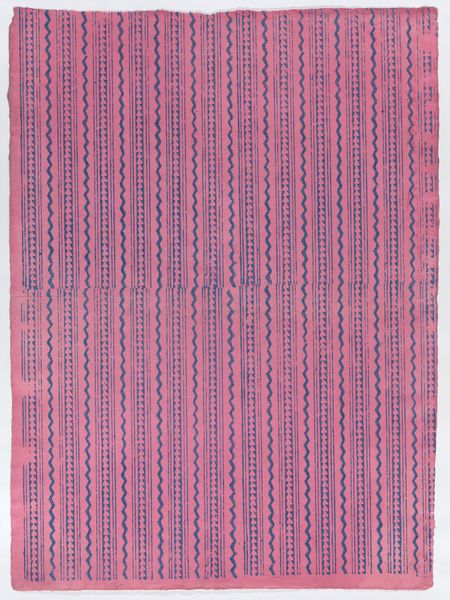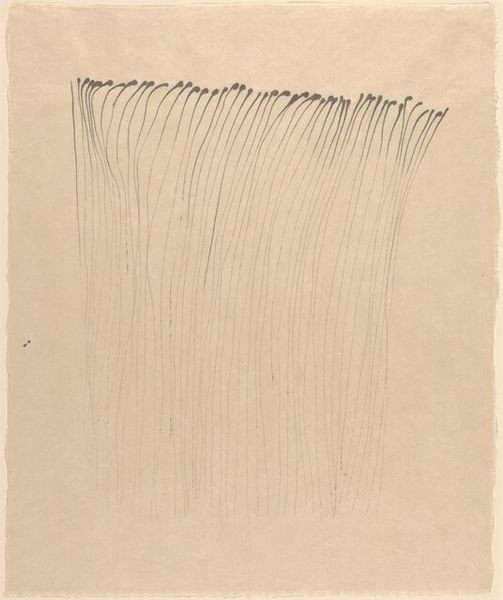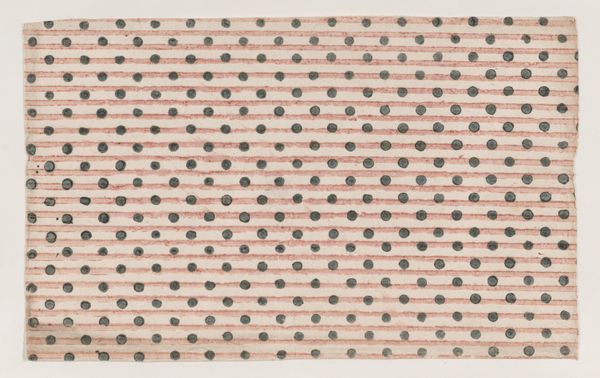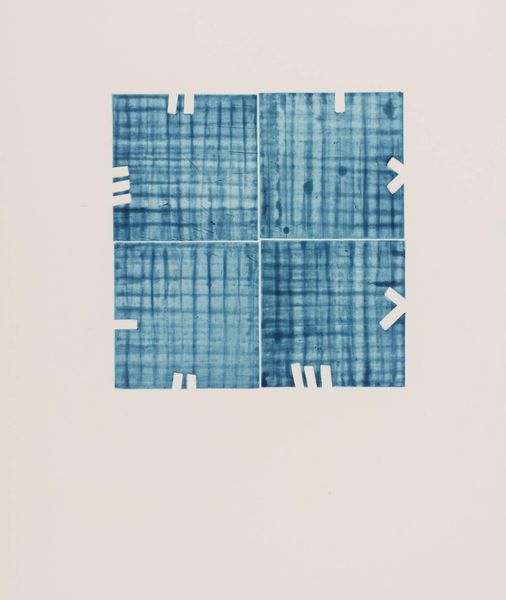
drawing, mixed-media, weaving, textile, paper, watercolor
#
drawing
#
mixed-media
#
weaving
#
textile
#
paper
#
watercolor
#
mixed medium
#
mixed media
#
watercolor
Dimensions: overall: 35.4 x 25.9 cm (13 15/16 x 10 3/16 in.)
Copyright: National Gallery of Art: CC0 1.0
Curator: This is "Scarf," created around 1937 by Lyman Young. It’s a mixed-media work, combining drawing, watercolor, and weaving or textile elements on paper. Editor: My immediate reaction is its intriguing tension—part meticulously planned drawing, part loose, almost chaotic fringe. Curator: Precisely! The work provides insight into the intersection of design and craft during this period. Young's detailed rendering suggests an engagement with both the artistic and functional aspects of textile production. We might think about the division of labor that defined textile industries. Editor: And the social implications of that labor. Who made the original textile that served as inspiration, and what were their conditions of employment? It compels one to think of global manufacturing, particularly gendered labour and commodity production, even now. Curator: I think there’s also a powerful relationship happening here between planning and execution. The detailed sketch gives us insight into design development—showing steps usually concealed. What do we learn about standardization, skill and mass production if we read those linear steps? Editor: Agreed, this allows one to imagine the original process—a shift from handcrafted art to a commercialized object and also brings up the history of gendered work like knitting, weaving. In what ways was Young pushing against—or supporting—the politics of work in textiles by displaying the "blueprint"? It also allows viewers to consider production means behind material comfort. Curator: Also, let's not overlook that juxtaposition of meticulously rendered structure of weaving and the expressive freedom found in that free-flowing fringe; consider what tension it is making. It invites examination of materials themselves. Editor: What you describe really encourages me to read this piece as a commentary of tensions existing during that time, whether we interpret those through commodity feminism or material cultures and its relation to labor class divide. Curator: The combination of these artistic media transforms a simple textile design into a wider conversation on material and means. Editor: Absolutely. It becomes an artwork with layered, critical observations and perhaps a call for justice and awareness to the real working conditions in this world of textile.
Comments
No comments
Be the first to comment and join the conversation on the ultimate creative platform.
